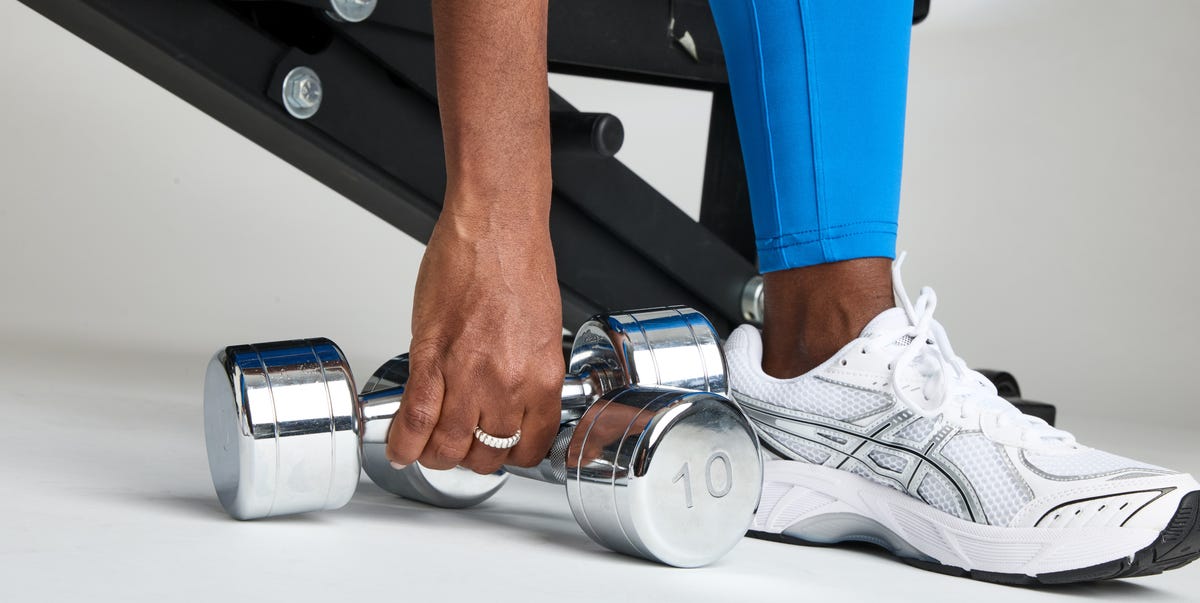Looking for a move that wakes you up? It’s even in the name when it comes to the good morning exercise, which—naturally—mimics the movement of getting out of bed.
But, this hip-hinge motion takes it to another level because it is actually waking up every muscle along your posterior chain: your hamstrings, glutes, spinal erectors (the muscles that run up and down your back along your spine), and your transverse abdominals (the corset muscles that wrap your core), says Harris Murrieta, CSCS, coach for personal training platform Ladder and director of recovery at Performix House in New York City.
Meet the experts: Harris Murrieta, CSCS, is a coach for personal training platform Ladder and director of recovery at Performix House in New York City. Claudette Sariya, CPT, is a personal trainer, founder of Year of You Fitness, co-founder of Asian Women Stay Running, and member of the Women’s and Men’s Health Strength In Diversity initiative.
And, it should have a special place in your warm-up before a lower body workout. Here’s how to do this move the right way, according to trainers.
How To Do The Good Morning Exercise With Proper Form
How to:
- Stand up straight with feet shoulder-width apart.
- Hold pair of dumbbells in each hand and rack them at base of neck, resting on shoulder blades.
- Maintaining a soft bend in knees, engage glutes and hinge at hips, keeping a flat back the entire time.
- Lower so chest is parallel with ground.
- Drive feet firmly into floor, brace core, and reverse movement, pushing hips forward to stand tall.
Form tips: Make sure your hips are driving back, not down, as you lower toward the ground, and maintain a straight spine throughout the entire move because rounding or overarching the spine risks injury, Murrieta says. You’ll also want to keep your gaze forward, so your head is in line with your spine the entire time, she says. Don’t lift your head up.
Benefits Of Good Mornings
Good mornings are a great move to add into your lower body rotation. They target your entire posterior chain—giving extra love to your hamstrings and lower back—and core. They also rely on your back muscles and neck for stability, which means that this move is good for spinal health and stability, too, says Claudette Sariya, CPT, a personal trainer and member of the Women’s and Men’s Health Strength In Diversity initiative.
“At its core, this movement is similar to a deadlift (although you won’t be able to complete it with nearly the same amount of weight) in that it’s a hip hinge-type movement,” Murrieta says. “But loading the weight at the shoulders rather than in your hands forces the muscles in the upper and mid-back to work harder than other hinge patterns.”
Hip hinge movements are one way to build better power and explosiveness, which comes in handy when you’re doing things like running or jumping, adds Sariya. They also have the perk of being functional movements, which means they mimic—and therefore prepare you for—movements you do in every day life. “You’re doing good mornings when you’re picking grocery bags off the ground, bending over to tie your shoelace, and rocketing up the subway steps,” Sariya says.
Make Good Mornings Part Of Your Workout
It’s actually best to use good mornings as a warm-up in the beginning of your workout. Here’s why: Since they incorporate so many muscles, they’re great for prepping your lower body or back for heavier lifts, Murrieta says. It’ll set you up to crush other moves. “It’s kind of like doing a dress rehearsal for heavier deadlifts or kettlebell swins,” Sariya says.
Good mornings may look simple, but they’re actually a bit of an advanced move, so make sure you pay attention to form and don’t go too heavy too soon. Your hammies will burn doing the movement with zero resistance, and loading on a hip hinge increases risk of injury if you’re not using an appropriate weight. Start with a light weight of anywhere from five to 10 pounds.
(Psst: Have any kind of neck issue? Stick with a light weight—you don’t want to load too much onto your cervical spine.)
But once you build the foundational strength, you can up the ante on your good mornings by going up in weight. Just keep in mind, Murrieta says, this should be more of a maintenance move than a heavy lift. Don’t worry: you’ll feel that burn regardless.
Reps/sets for best results: Aim for three sets of 10 to 15 reps, says Sariya.
Olivia Luppino is an editorial assistant at Women’s Health. She spends most of her time interviewing expert sources about the latest fitness trends, nutrition tips, and practical advice for living a healthier life. Olivia previously wrote for New York Magazine’s The Cut, PS (formerly POPSUGAR), and Salon, where she also did on-camera interviews with celebrity guests. She’s currently training for the New York City marathon.
Read the full article here




